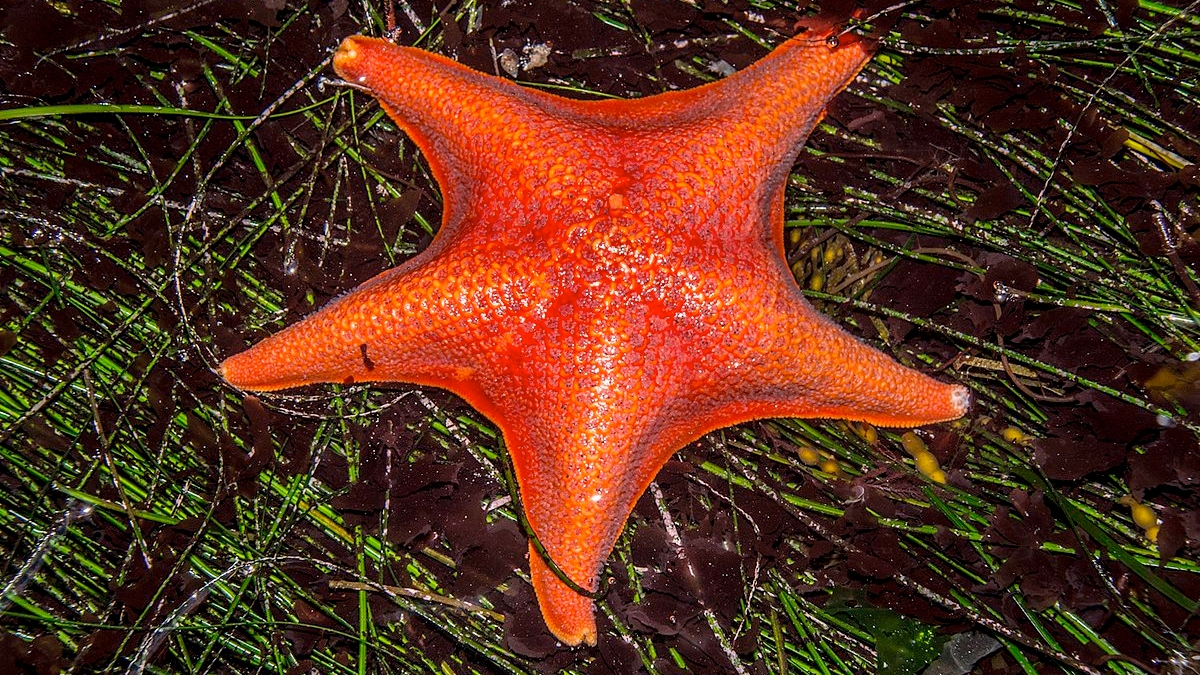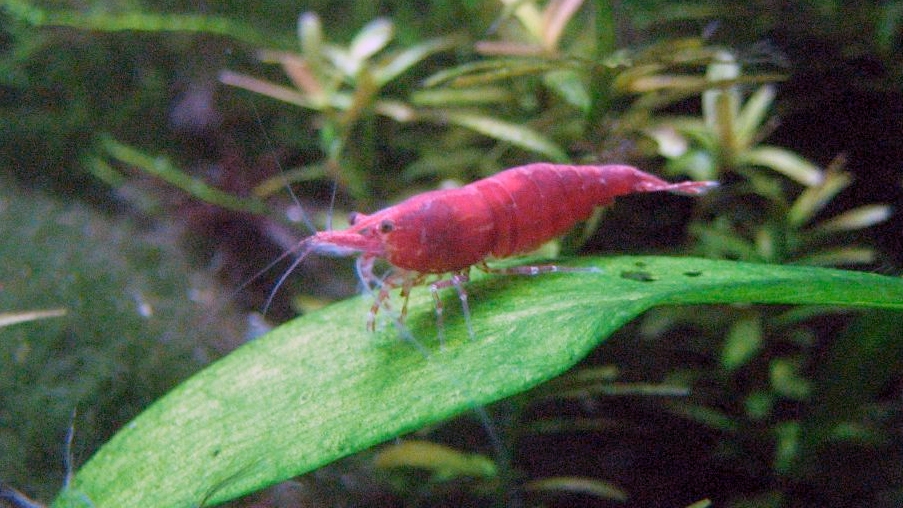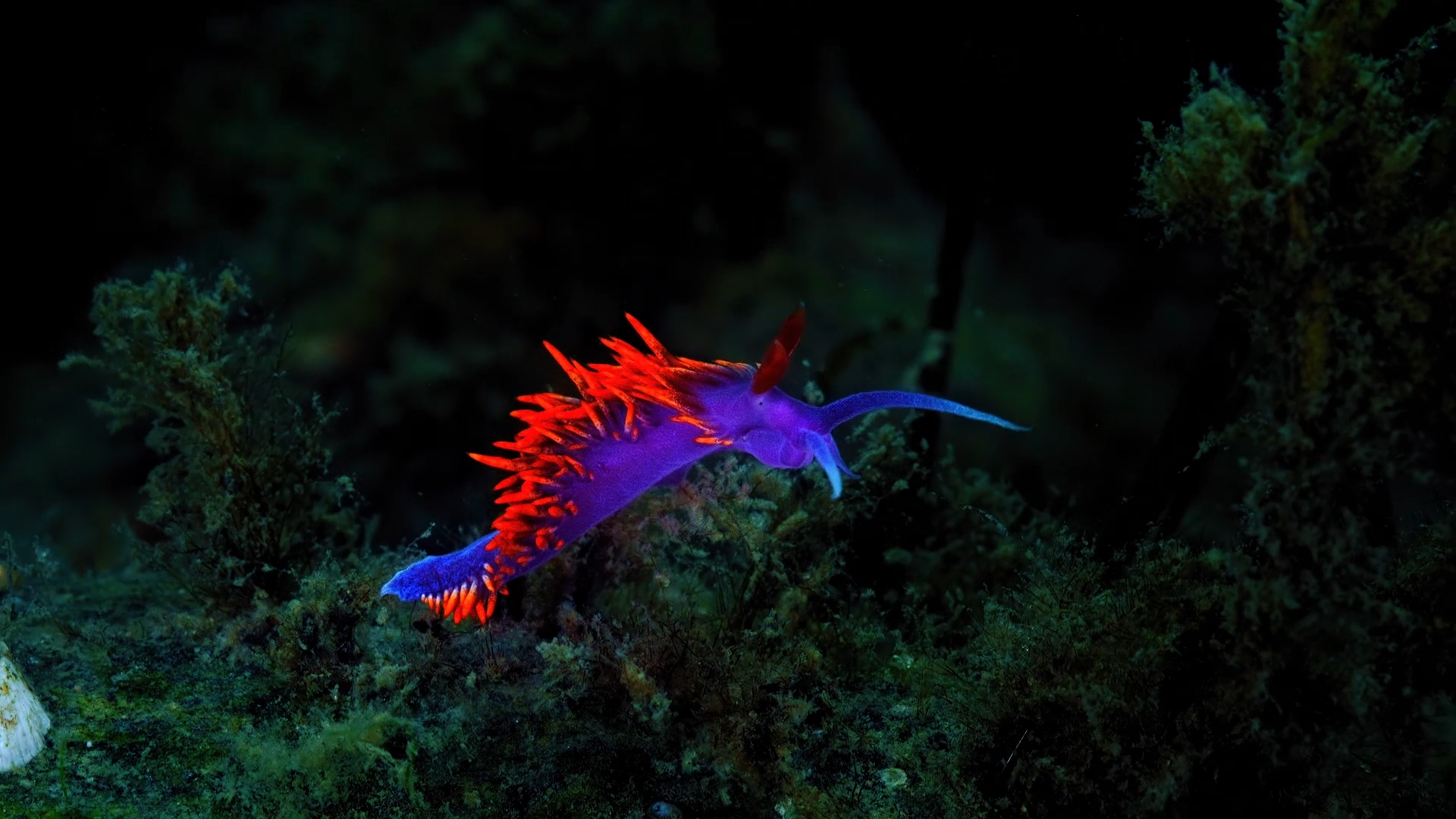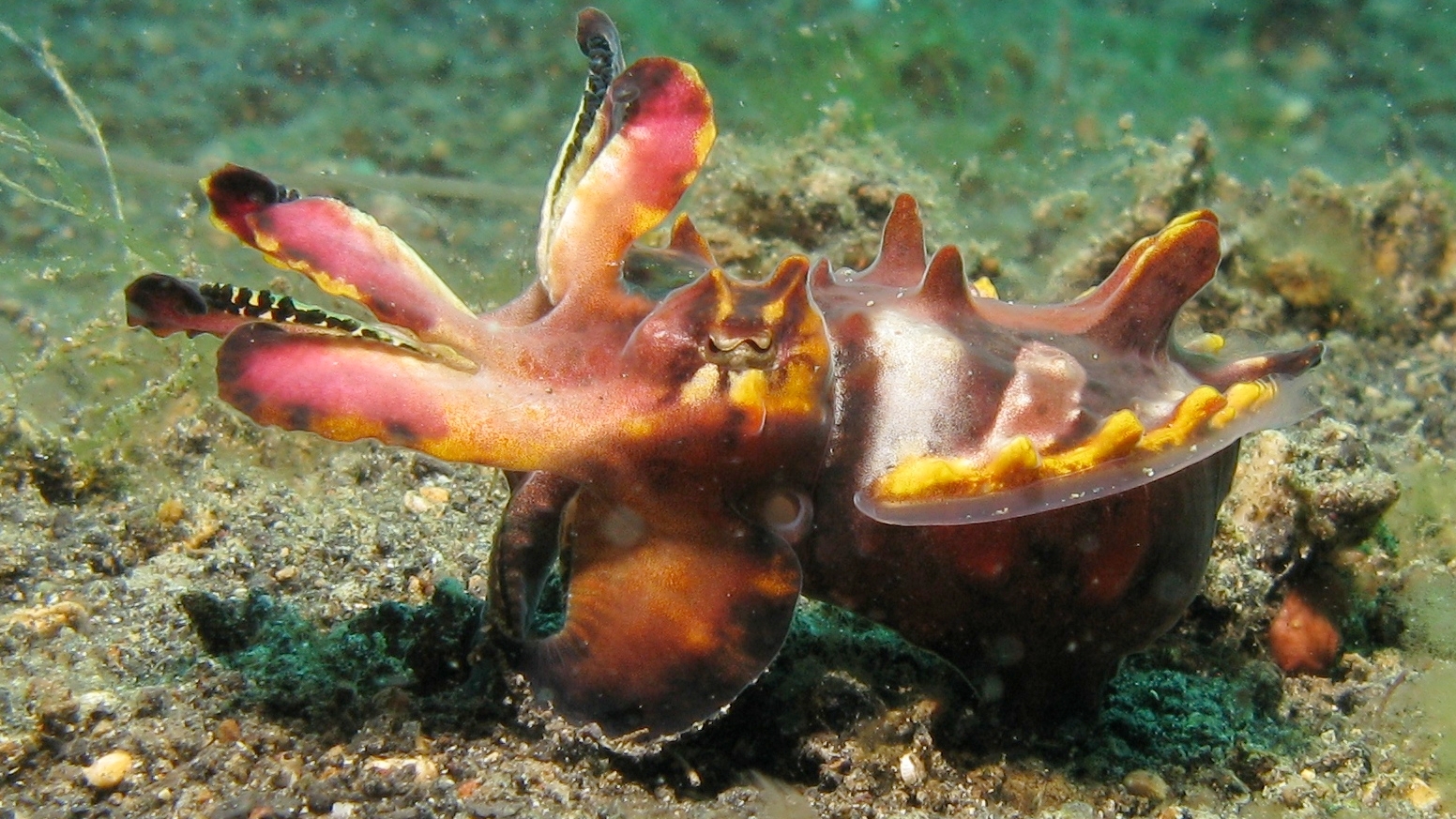MBL March Madness: Colorful Critters Division

Looks aren’t everything, but in this division they might be. These organisms use bright colors for everything from attracting a mate to warning off predators. Organisms including cephalopods (octopus, cuttlefish, and squid) can use adaptive camouflage—showing off bright colors one moment and blending into their surroundings at the next. Researchers at the MBL study the biological processes behind some of nature’s most colorful critters.
Meet the Organisms:
Bat Star

Bat stars (Patiria miniata) are named for the thick webbing between their arms that gives them a more “bat-like” appearance than other sea stars. These colorful echinoderms are most commonly seen in some shade of red or orange, but are also found in a variety of mottled colors including yellow, brown, green, pink, and purple. Scientists at the MBL and around the world study bat stars to learn more about embryonic development, reproduction, and regeneration.
Cherry Shrimp

One of just two freshwater species participating in MBL March Madness this year, cherry shrimp (Neocaridina davidi) are native to freshwater streams of Taiwan. They belong to the order of crustaceans knows as decapods, which translates to “ten-footed” and includes lobsters, crabs, crayfish, prawns, and other shrimp. Researchers at the MBL have been working to establish cherry shrimp as a new model organism for crustacean development to evaluate the role of Hox genes in body plan organization.
Nudibranchs

There are more than 3,000 known species of nudibranch in the world, with new species discovered on a regular basis. These flamboyant sea slugs are found throughout the world’s oceans, but they are most abundant in shallow, tropical waters. For decades, nudibranchs have been an important model in the field of neuroethology—the study of how the brain controls behavior.
Flamboyant Cuttlefish

Flamboyant cuttlefish (Metasepia pfefferi) are brilliantly colorful cephalopods from the Indo-Pacific region and can be found off the northern coast of Australia, Southern New Guinea, and various islands of the Philippines. The flamboyant cuttlefish has some of the best camouflage in the animal kingdom. Recent research from the MBL found that camouflage is its primary mode of defense and it’s what the cuttlefish looks like most of the time.